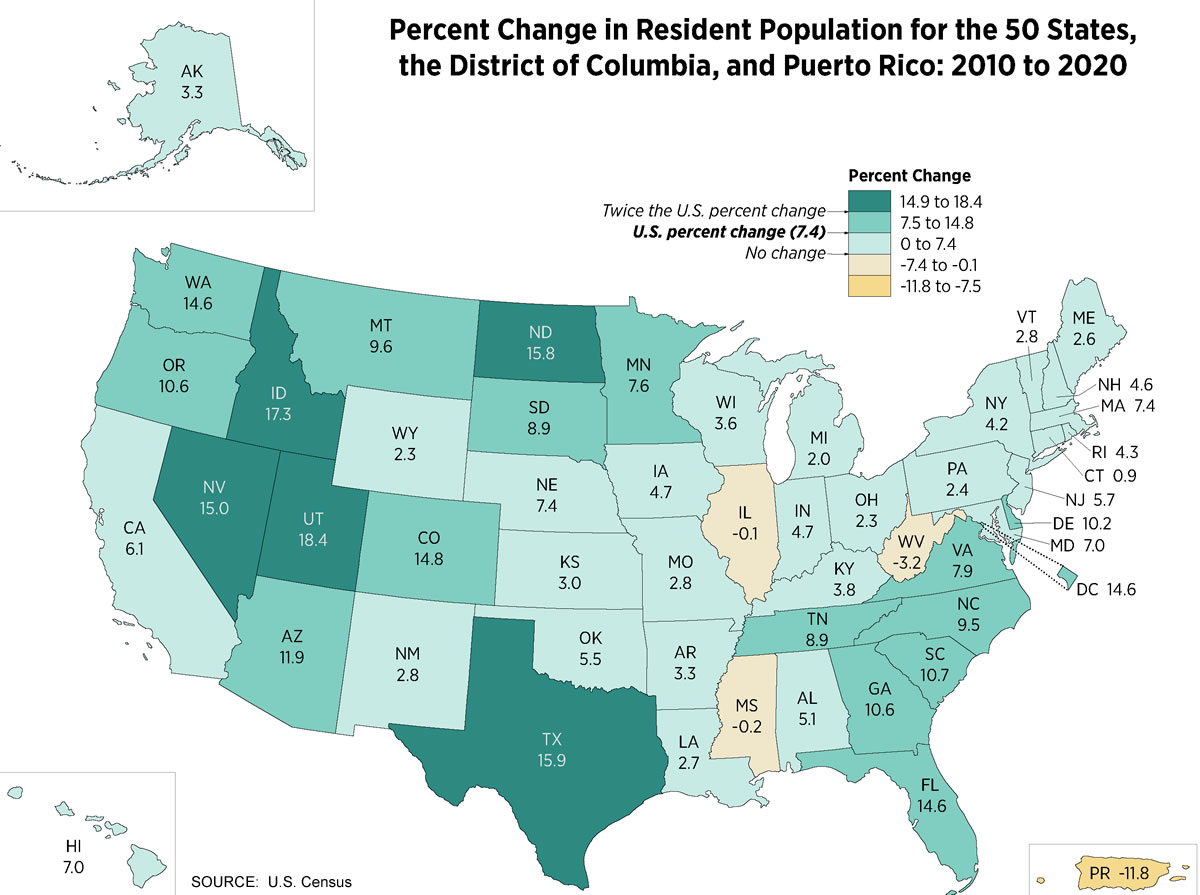
News analysis by Andy Brack | New top-line numbers from the 2020 U.S. Census show South Carolina picked up almost a half million new residents from 10 years earlier, but its 10.7 percent growth wasn’t enough to lead to an additional congressional district.
If the state’s higher-than-average growth continues, however, there’s a slight chance it could add an eighth congressional seat during constitutionally mandated redistricting in 2031 after the 2030 census, according to a Statehouse Report analysis.
Nationally, the U.S. population grew to 331.4 million in 2020, up 7.4 percent or 22.7 million people from 2010, according to the Census.
Based on the 2020 census, six states will gain extra seats because of population redistribution and growth — two for Texas and one each for Colorado, Florida, Montana, North Carolina and Oregon. Seven states lost seats — California, Illinois, Michigan, New York, Ohio, Pennsylvania and West Virginia. New York made headlines for losing a seat by coming up 89 people short.
In 2010, South Carolina gained a seventh congressional seat. Members of the General Assembly then redrew maps to carve a seat (SC-7) that stretches from Florence to the Grand Strand and redrew lines to restore a seat (SC-1) centered on Charleston and Beaufort counties.
According to the 2020 results released this week, South Carolina maintained its seventh congressional seat through a complicated formula that produces priority ratings of population for each seat in the U.S. House. South Carolina had enough people to come in 421 out of 435 House seats in the priority rating system to keep the seventh seat. That ranking also means 14 seats have lower ratings and associated populations.
Minnesota, which scored 435th in the 2020 census rating to keep a seat, has a population of 5.7 million, which is about 600,000 more people in South Carolina.
If South Carolina continues to grow at a higher pace than the national average — as most Sunbelt states do — there’s a chance it could pick up another seat in 2031. To do so, it would have to add at least another 600,000 people, but probably more like 700,000, over the next 10 years. But keep in mind, the 2020 census shows several states — Utah, Idaho, Nevada, Texas, North Dakota and Florida — had higher growth rates than South Carolina.
- Have a comment? Send to: feedback@statehousereport.com.
















 We Can Do Better, South Carolina!
We Can Do Better, South Carolina!